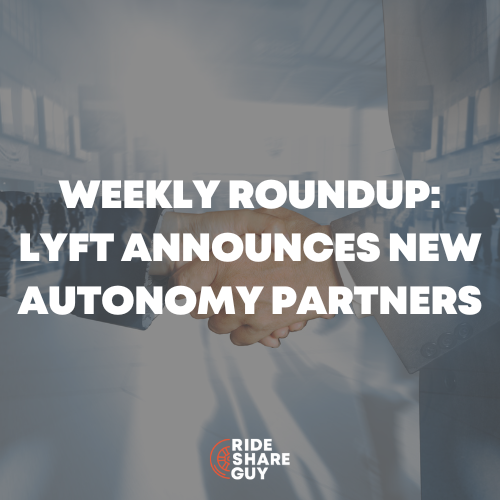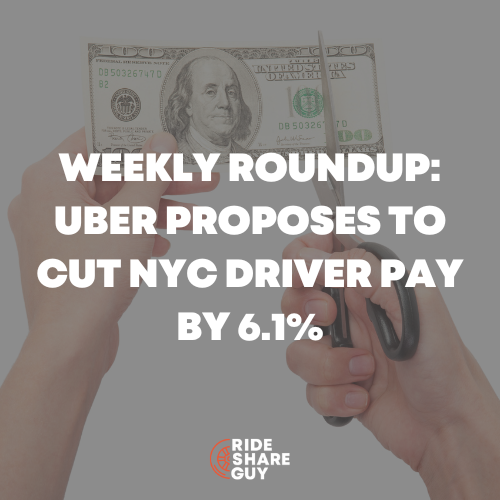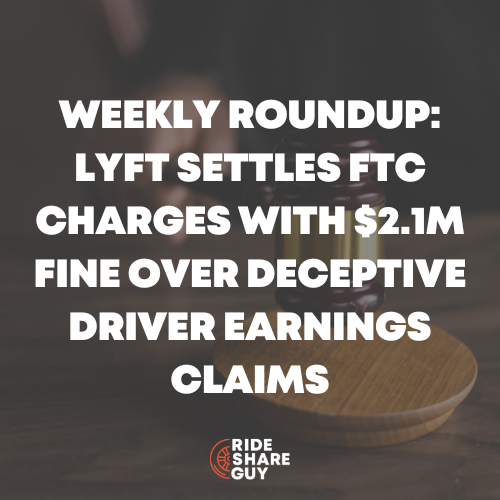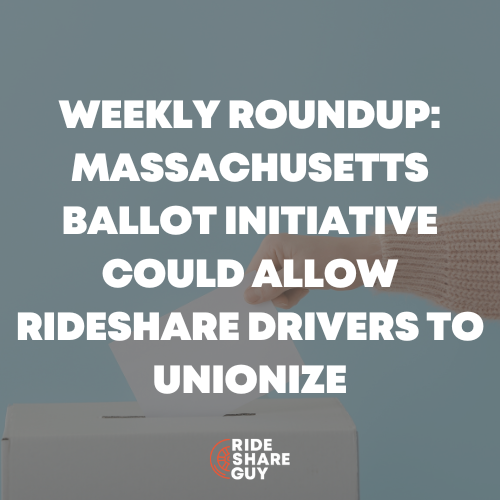A lot to get to in this week’s round up, including Bird’s explosive growth, how Uber’s biggest crisis yet all started with vomit, and how Lyft is helping drivers save money on gas. Senior RSG contributor John Ince covers that and more in this week’s round up.
Cargo, the company that pays drivers to hand out or sell goodies to passengers, is now in LA! If you sign up with Cargo by June 30, you’ll get a $60 bonus (LA drivers). Cargo is in a number of cities and growing rapidly – find out if Cargo is available in your city here.
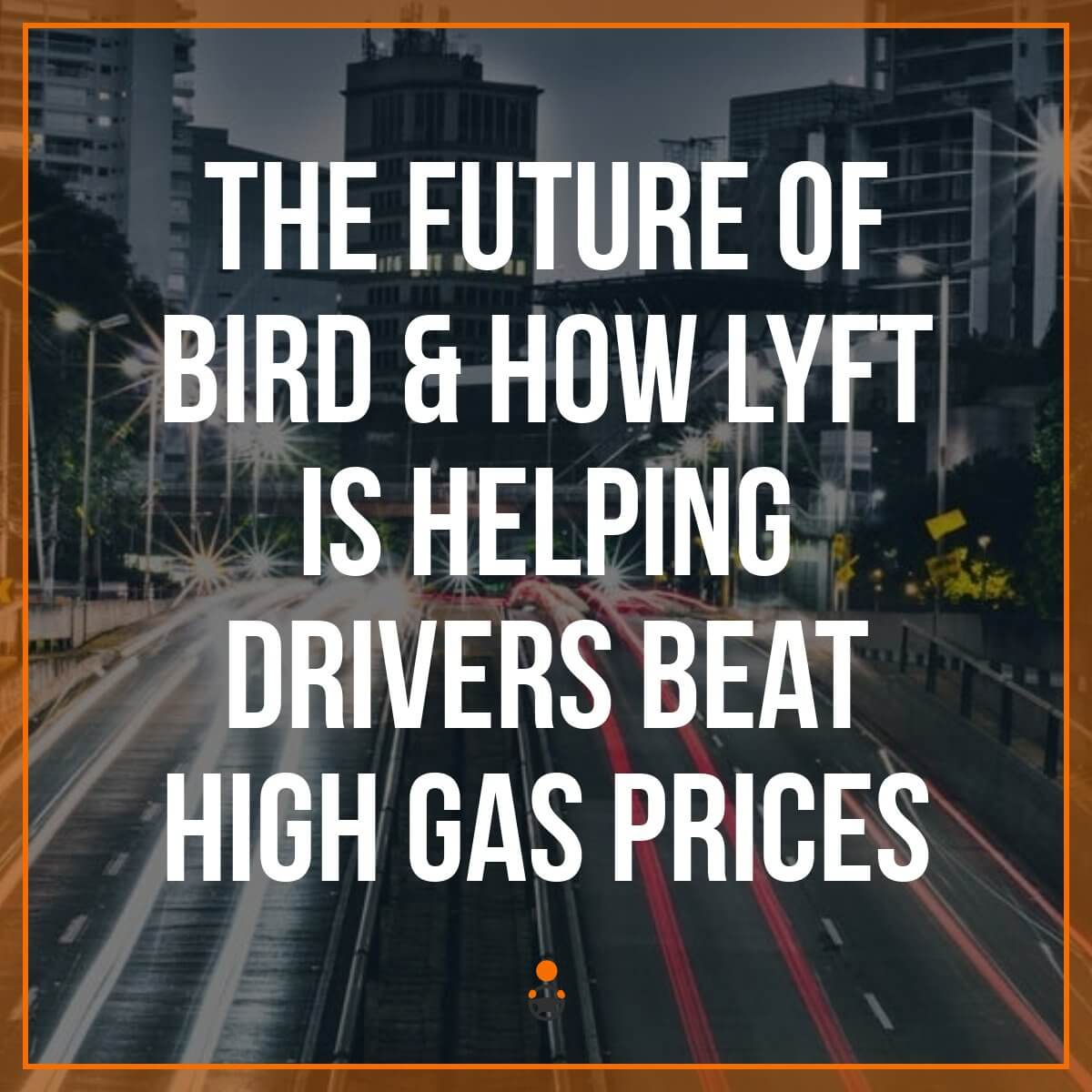
Is Bird, a scooter company now seeking a valuation of $2 billion, the next Uber—or Juicero? [Vanity Fair]
Sum and Substance: Bird boosters contend that the two-wheeled contraptions are the future of transportation—a fast, cheap, city-friendly alternative to ride-hailing services, and one that could become wildly profitable…
A $15 million Series A round was followed by a $100 million cash injection led by Index Ventures in March, and $150 million from Sequoia Capital just two months later at a $1 billion valuation, elevating Bird to bona-fide unicorn status. According to Axios’s Dan Primack, Bird is now seeking another $200 million in new funding at double that valuation. (The Financial Times, which also reported on the new funding round, pegged Bird’s pre-money valuation at closer to $1.5 billion.)
Bird could, of course, become a large-scale company and an acquisition target for organizations as seemingly varied as ride-sharing, logistics, and retail companies….
Whether scooters are the vehicle of the future, or just another metaphor for bi-coastal navel-gazing, is an open question in Silicon Valley. “Doesn’t it feel like the Uber heyday all over again? On some level, I get it—but also, I want no part in it,” one investor told me. “There’s liability issues, regulatory issues.” Others wonder whether Bird’s vertigo-inducing ascent is merely a reflection of industry groupthink, or worse. Bird may be popular among yuppies in large cities, but will it really scale around the world?…
For investors hoping to replicate Uber’s early hockey-stick growth, Bird and its competitors look like a way to get in on the ground floor. Bird’s ostensible rival in the electric-scooter space, Lime, has also seen a surge of interest, raising $250 million at a $750 million valuation from GV, Google’s investment vehicle, as well as IVP, Andreessen Horowitz, and Coatue Management.
Uber and Lyft, loath to cede market share to another challenger, are both seeking permits of their own to begin operating electric scooters in San Francisco. Behind the mania, however, is the billion-dollar question: who are the people this product is really for? And are there enough of them to justify the venture-capital arms race? …
My Take: Oh my, $2 billion valuation in little over a year! I’m an avid bicyclist, so I totally get what Bird is all about. It offers a sense of freedom, and even fun, getting from point A to point B. But contending with all the risks and vagaries of urban congestion means you’re building the company on the shifting sands of regulatory uncertainty.
It’s also a legal minefield. If one person, gliding down the street, gets crushed buy an automobile, who is going to assume responsibility? The company? The rider? The current approach with many companies is to bury a disclaimer in the back end of the terms of service agreement that nobody reads.
Uber and Lyft have a war chest of billions they can deploy to settle cases, but what’s a startup like Bird going to do? For me, I’m not sure I would invest at this point unless those types of questions were fully addressed. Maybe that’s why I’m laboring behind the wheel, instead of lounging around in my personal jacuzzi.
Editor’s Note: Lots of opportunity right now for those who want to ‘Charge for Bird’ – check out our post here or our latest Youtube video!
The biggest legal crisis facing Uber started with a pile of vomit [Wired.UK]
Sum and Substance: This is the inside story of a landmark legal battle that could fundamentally change not only Uber, but the entire gig economy.
It was a busy Friday evening in March 2015 when Uber driver James Farrar picked up three women from Canary Wharf in London Docklands. They were drunk, putting their feet up on the headrests and demanding he turn on some music. It was, for Farrar, like any other Friday night as an Uber driver. And it still was when he stopped at a set of traffic lights in nearby Aldgate only for one of the passengers to open the back door of his car and vomit on to the road.
“I said, ‘Look, you need to go for a walk, get a bottle of water, and set off again when you’re okay,’” Farrar recalls. The women eventually obliged. But, as he sat in his car filing a report about the incident to Uber, he spotted the women walking towards a Prius gliding into position on the other side of the road. “I thought I had a duty to warn him, as a fellow Uber driver, that this was not going to be great,” he says. Farrar stepped out of his car and walked over. One of the women started shouting and pushed him…
Farrar, concerned Uber wouldn’t believe his version of events, held up his phone to take a picture of the collapsed women.. The women followed me back to the car, kicked the panel work, then went off.”
Farrar called the police, worried that the woman who had shouted at him might take action against him, and was asked to provide further details… “The police said to me, ‘What’s the name of the passenger?’ I said, ‘I don’t know.’ And they were like, ‘Well, surely you know? It’s your customer.’ I said, ‘Yes, it is my customer, but I don’t know the name, or the address, but I’ll ask Uber for it.’” Farrar got back in his car and completed a few more rides before going home.
… In July 2015, Farrar contacted Leigh Day, a London-based law firm known for taking on corporate giants… Leigh Day took a look at his contract. The document made it clear that Farrar was self-employed, but the realities of how he was required to work for Uber meant he couldn’t be. According to UK law, he should have been classified as a worker and thus entitled to basic employment rights such as holiday and sick pay and the minimum wage.
Uber eventually sent the lead passenger’s details, weeks after the request. She agreed that the statement Farrar had given to the police was correct and said she wouldn’t pursue any action…
Leigh Day was confident Farrar had a strong case against Uber over its insistence that he was self-employed. Farrar asked Leigh Day to pursue the case, setting in motion a legal battle that could fundamentally change not only Uber, but the entire gig economy.
My Take: This is a fascinating in-depth analysis of an issue that still hangs like a cloud over this industry – are drivers really independent contractors? Uber/Lyft lawyers, so far, have managed to keep the flood waters back, but more is coming – as evidence by what’s happening in UK.
Lyft drivers in California recently got a settlement check, which was only a temporary postponement of what I see as the eventual reckoning in this industry. You can only paint over reality for so long. Sooner or later, people are going to have to start calling a spade a spade. When that happens, the economics of this industry will change dramatically. Uber can only hope they complete a successful IPO before that day of reckoning.
Helping You Save on Gas This Summer [Lyft Hub]
Sum and Substance: To help you cover the cost of gas this summer, we’re increasing your Shell fuel rewards up to 50 cents a gallon, starting July 1. Wherever you’re headed, we want to help you get there — whether it’s shuttling the kids to camp, enjoying the warm weather at a picnic, or making extra earnings on the road.
How to redeem fuel rewards: The more rides you provide, the more you will save. Lyft and Shell are doubling the $0.05/gallon reward currently provided to the majority of active drivers to $0.10/gallon. For those of you who have achieved Platinum or Gold status as part of the Accelerate program, your savings will increase seven and five times, respectively. Fuel savings for Platinum level drivers increase from $0.07/gallon to $0.50/gallon, and savings for Gold drivers increase from $0.05/gallon to $0.25/gallon. …
To redeem your new rewards, you’ll need to create a Shell Fuel Rewards account and link it to your Lyft account. Not sure where to get started? We’ll walk you through it here. Already receiving fuel rewards? Then there’s no action required: your new rewards will go into effect automatically.
If you haven’t signed up for the Fuel Rewards program, you will receive a one-time $0.25/gallon savings (up to 20 gallons) for your first fill-up once you’ve activated your account. For all additional visits to the pump, you will receive the higher rewards.
My Take: Nice perk, especially for full time drivers. In my neck of the woods, Shell costs at least 30 cents more per gallon than my regular station – so I won’t be going out of my way to take advantage of this, but if you’re able to leverage any rewards you have plus the Lyft reward, it could be worth it for you.
As ride-sharing booms, some cabbies turn to suicide [CBS News]
Watch: The Rideshare Guy, Harry Campbell, on CBS News. “New York City for hire drivers have seen the value of their medallions plummet over the past few years due to the rise of ridesharing services like Uber and Lyft – who’s to blame for the recent string of driver suicides?”
Drivers, what do you think of this week’s round up?
-John @ RSG
